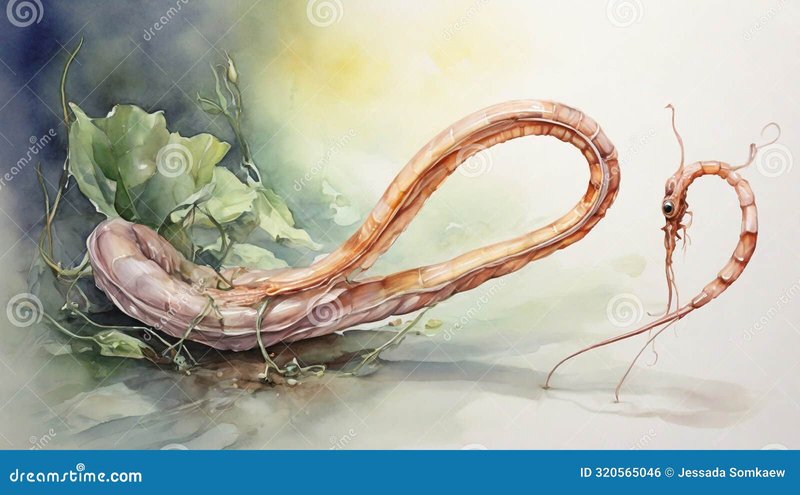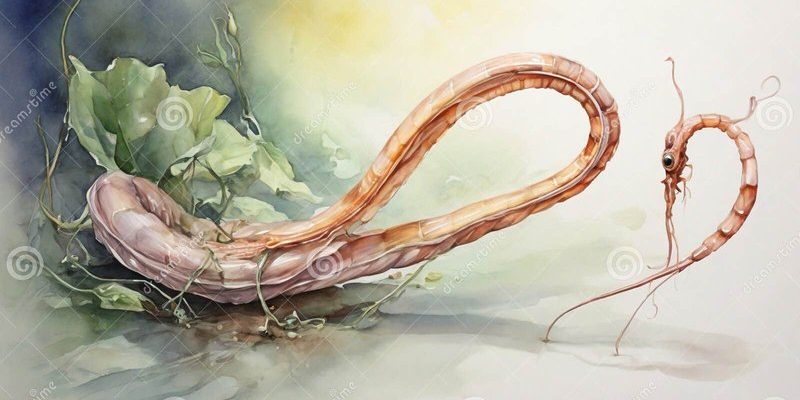
Picture this: you’re sitting at your favorite café, and you see someone expertly tossing a lasso to catch a runaway dog. Ribbon worms do something similar in the water, but instead of a rope, they use their proboscis to reel in unsuspecting critters. This article dives deep into the world of ribbon worms and how they’ve evolved such an interesting hunting strategy.
What Are Ribbon Worms?
Ribbon worms, or nemerteans, are fascinating creatures that inhabit marine environments worldwide. They can be found in a variety of colors and sizes, from just a few centimeters to several meters long. These soft-bodied worms are part of a larger group called **invertebrates**, which means they lack a backbone—kind of like the quirky cousins of the ocean.
These worms are unique in several ways. While many marine animals rely on speed or armor for survival, ribbon worms use their specialized anatomy, particularly their **proboscis**, to capture prey. This slimy, retractable organ is not just for show; it’s a highly developed tool that allows them to hunt effectively.
Habitat and Distribution
You might be wondering where you can find these creatures. Ribbon worms are versatile and thrive in various environments. They often dwell in shallow coastal waters, hiding beneath rocks and sediment. Some species prefer murkier waters, while others can be spotted in clear, tropical regions.
Interestingly, their habitat can influence their color and size. For instance, those in deeper waters might be darker to blend in, while shallow-dwelling worms may sport brighter hues. This adaptability helps them avoid predators and successfully hunt for food.
The Anatomy of the Proboscis
So, what makes the **proboscis** of a ribbon worm so special? At first glance, it might look like just another elongated body part, but it’s more than that. The proboscis is a muscular, flexible tube that can extend and retract quickly, almost like a tongue. This allows ribbon worms to snag prey from a distance.
The inner workings of the proboscis are quite fascinating. It’s lined with **sticky mucus** and often armed with tiny spines that help secure their catch. When a ribbon worm spots a meal—often small fish or crustaceans—it can launch its proboscis to capture the unsuspecting victim. Talk about a dramatic way to snag dinner!
How the Proboscis Works
Here’s the thing: the proboscis isn’t just a simple extension. It has its own set of muscles that allow for quick movement. When a ribbon worm senses prey nearby, it can swiftly uncoil its proboscis and aim it precisely. Once it makes contact, the sticky mucus grabs hold, and the little spines keep the prey from escaping.
This hunting technique is effective and efficient. The ribbon worm doesn’t have to chase its food; it can wait patiently and strike when the moment is just right. It makes dining out in nature a lot easier, don’t you think?
The Prey and Diet of Ribbon Worms
Now that we understand how they catch their food, let’s chat about what ribbon worms eat. Their diet is quite varied and depends on their species and environment. Many ribbon worms feast on small invertebrates, such as **crustaceans** and **polychaete worms**. Others might munch on tiny fish or larvae drifting through the water.
The diversity in their diet allows ribbon worms to thrive in different ecosystems. They are opportunistic feeders, meaning they’ll go after whatever’s available. This makes them vital players in their habitats, helping maintain the balance of marine life.
Why Their Hunting Technique Matters
You might be asking yourself, “Why should I care about how ribbon worms hunt?” Great question! Understanding their predation techniques gives us insight into marine ecosystems and how different species interact. Ribbon worms can help control populations of smaller marine creatures, impacting the entire food web.
Moreover, studying such unique adaptations can inspire innovations in fields like robotics and materials science. Who knows? Maybe one day, scientists will create devices inspired by the sticky, retractable proboscis of a ribbon worm!
Common Misconceptions About Ribbon Worms
Despite their interesting qualities, ribbon worms are often misunderstood. One common misconception is that they’re all dangerous or harmful. While some might be venomous, most species are harmless to humans. In fact, they play a crucial role in their habitats, like unnoticed little chefs preparing the balance of ocean life.
Another misunderstanding is their size. While some ribbon worms can grow lengthy, many remain relatively small. Their lengthy appearance often makes them seem intimidating, but they’re usually more interested in avoiding predators than attacking larger creatures.
Comparing Ribbon Worms to Other Marine Creatures
You might be curious how ribbon worms stack up against similar creatures. For example, consider how they differ from other **predatory marine animals** like octopuses or sea jellies. Ribbon worms rely on a stealthy ambush technique, while an octopus uses its intelligence and agility to pursue prey directly.
Sea jellies, on the other hand, use their stinging tentacles to capture food. Each of these methods showcases the diverse strategies of marine life, but ribbon worms stand out with their unique proboscis action.
Conservation and Importance of Ribbon Worms
As we wrap up our journey into the world of ribbon worms, let’s touch on their conservation. Like many marine species, ribbon worms face threats from pollution, habitat loss, and climate change. These challenges can disrupt their populations and the ecosystems they inhabit.
Protecting ribbon worms and their habitats is crucial not just for their survival but for the health of the entire marine ecosystem. By maintaining healthy ocean environments, we help ensure that these remarkable creatures and countless others can keep thriving.
How You Can Help
You might be wondering how you can contribute to the conservation of ribbon worms and other marine life. Here are a few simple steps you can take:
- Reduce plastic use to keep oceans cleaner.
- Support marine conservation organizations.
- Practice responsible fishing and boating to avoid harming habitats.
Being mindful of our impact on the oceans can go a long way in helping creatures like ribbon worms continue their unique lifestyles.
In conclusion, the world of ribbon worms and their incredible proboscis is both fascinating and important. By understanding these creatures better, we can appreciate the intricate balance of marine ecosystems and our role in preserving them. Whether in the depths of the ocean or the shallow waters near shore, ribbon worms play a vital role in the underwater drama of life. Let’s keep exploring and advocating for the wonders of our natural world!

